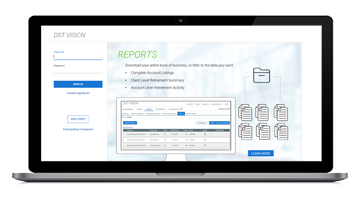Zeroing in on private credit: more than meets the eye?
From humble beginnings to rising prominence and mass appeal, private credit has evolved from a mere financing appendage to more than a trillion-dollar asset class—all in a span of just two decades. What are some of the key drivers that have altered the course of traditional lending? Let’s trace the origins of this asset class to examine its role in contemporary portfolio construction.

Structural changes dating back to the global financial crisis (GFC) of 2007-2008 have played a significant role in ushering in a new era for private credit, paving the way for meaningful shifts in the regulatory landscape. For context, the enactment of both Dodd-Frank and Basel III marked a major inflection point for the future of private credit, inciting banks to significantly scale back on lending practices.
Outlining the stellar growth trajectory of private credit
While tighter regulations have undoubtedly transformed the backdrop for corporate lending post-GFC, the reality is the ratio of bank loans to deposits has fallen meaningfully over the last 24 years. This long-standing trend has contributed to a funding gap that’s since been filled by nontraditional lenders.
U.S. bank loans vs. deposits
Tracking the ratio of bank loans to deposits (%) vs. total deposits ($) in the last 24 years
Underneath the surface has also been a tremendous wave of bank consolidation, which has seen the number of FDIC banks in the United States decline by half since the early 2000s. And that’s not all—the situation for banks only grew more challenging in 2023 amid a string of U.S. regional bank failures.
The U.S. banking system has undergone a wave of consolidation
Gauging the number of FDIC banks since the early 2000s
With banks stepping away from some legacy areas of lending (in particular levered corporate loans and parts of the asset-based lending markets), non-bank lenders have stepped in, contributing to the rising allure of private credit. Over the last 15 years alone, the value of the private credit market has soared nearly sevenfold, to roughly $1.7 trillion.
The private credit market has grown to roughly $1.7 trillion
Assets under management of private credit ($B)
Why companies are going down the private credit route
Companies opt to go down the private credit route for many reasons. Caveats such as lengthy time delays related to bank syndication (a process whereby several banks and financial institutions consolidate resources to extend financing for a single loan to a borrower), the requirement of a credit rating to go to market, or constraints involved with having to raise capital at a substantial scale are just some reasons why corporate borrowers move away from public market sources. Meanwhile, enhanced certainty (having the peace of mind that a lender won’t back out in the closing stages of a deal) along with swiftness of execution are other reasons why private credit is garnering appeal.
The private credit opportunity
Demand for private credit has been strong, and we believe momentum is projected to remain robust. In comparison to traditional income-producing asset classes, private credit continues to provide attractive yield potential. Diversification is also an important feature of private credit. After all, the private credit spectrum is broad and encapsulates more than just direct lending (which can be defined as corporate loans made by non-bank entities without the need of an intermediary). All of these private credit strategies tend to have a lower correlation to public markets instruments such as equity and fixed-income securities, underscoring the potential benefits of adding a private credit component to a traditional 60/40 portfolio.1
Private credit has outpaced traditional income-generating asset classes
Evaluating yield potential (%) across the entire spectrum
Unraveling the many facets of private credit
Private credit isn't just defined by direct lending or what’s also referred to as corporate middle market lending—it’s more than just that. While it’s true that direct lending represents a big slice, it really only makes up about 45% of the market. In reality, there exists a myriad of private credit strategies that span three broad categories: corporate lending, specialty finance, and asset-backed lending.
Private credit strategies span three broad categories
Defining some of the most common private credit strategies
To get a sense of how broad private credit is, we’ll briefly touch on three areas: mezzanine financing, collateralized loan obligations (CLO), and aviation financing.
Originating in the 1990s, mezzanine financing is a private credit instrument and form of junior debt cuddled between senior debt and equity. Unlike other forms of private credit such as aviation financing, mezzanine loans are typically not backed by hard assets. They can be issued with an equity kicker, which is a convertible feature that may entitle the lender to benefit from an equity stake in a borrower. Meanwhile, CLOs are simply a portfolio of non-investment-grade2 senior secured loans that are both actively managed and vary according to risk exposure. They act as an alternative to corporate bonds and typically have floating rates.
Private credit strategies can also vary in terms of risk, ranging from the investment-grade category3 to the high-yield leveraged finance market4 and everything in between. Investors seeking a diversified private credit portfolio will find that each category across the private credit continuum also comes with a unique risk/return trade-off. For instance, those seeking enhanced yield potential may lean on specialty finance and real estate debt while those looking for increased inflation protection or capital appreciation may find it across direct lending, real estate debt, distressed debt, or mezzanine financing.
While it's true that direct lending represents a big slice of private credit, it really only makes up about 45% of the market.
Understanding the risks of private credit
Investing in private credit naturally comes with risks. These risks include, but aren't limited to, credit risk, liquidity risk, and risks associated with leverage. Like public debt instruments, private credit may be subject to risks stemming from either temporary or enduring financial distress; notably, the risk that an issuer will either fall short or become incapable of meeting its obligations to creditors. To help mitigate this risk, it’s not only important for lenders to select quality issuers with fundamentals that warrant the extension of credit but also to engage in ongoing monitoring of these issuers to ensure these fundamentals don’t change drastically.
When it comes to liquidity risk, private credit also tends to have lower liquidity, especially when up against traditional corporate bonds. In the retail world, private credit funds tend to have illiquid underlying assets and are structured with lock-up periods aimed at limiting redemptions. For this reason, these funds are geared to investors with longer time horizons.
Last, regarding leverage, while subscription lines to aid capital calls during the investment period are nothing new, some managers have more recently used them to ratchet up returns; in fact, most senior credit strategies in the market offer a levered option. While leverage can indeed increase the magnitude of potential gains, it can also increase the magnitude of potential losses.
Addressing rapid industry growth and rising competition
Private credit has recently undergone rapid growth. Reassuringly, much of this growth can be attributed to an overall shift from bank balance sheets to private investment firms. While it’s true that competition for loans has resulted in more borrower-friendly terms, tighter spreads, and weaker covenants, we’re starting to see more collaboration between private lenders and banks. Thankfully, there are also areas of private credit such as asset-backed lending that tend to be less exposed to these types of risks (competition is less fierce in these markets).
Fund size is also an important consideration. It can be argued that these risks may be a greater concern for larger funds. The sheer magnitude of the capital they have to deploy means they need to be less selective with deals. Additionally, there’s a tendency for large funds to move up market and lend to bigger companies, given the tens of billions of dollars they need to put to work. In this scenario, deals typically involving one lender could easily include 5 to 20 lenders. Seeing that one of the key advantages of private credit is the one-to-one nature of loans, benefits such as speed, certainty and term customization, and lender control could be reduced as the number of players in a deal increases.
The future of private credit
Material structural changes witnessed over the last two decades—such as tighter lending regulations—have incited banks to step away from some areas of private lending and encouraged non-bank financial institutions to fill the void. Whether or not we’ll see more dislocations in public markets in the future, looking at the private credit opportunity through a longer-term lens may suggest private credit could continue to play a role in addressing lending mismatches going forward. Is it possible to witness variations in capital and deal flow in the short term? Possibly, but with billions of dollars’ worth of private credit cash yet to be deployed, we think investor expectations for this asset type could sustain its growth for the long term.
1 A 60/40 portfolio is a traditional portfolio with a 60% allocation to equities and a 40% allocation to bonds. 2 Investment grade refers to the credit quality of a debt security. Investment-grade securities are deemed to have higher credit quality in comparison to their non-investment-grade counterparts. They tend to be backed by stronger fundamentals, which increases the chances of an issuer paying back principal and interest. 3 Non-investment grade refers to the credit quality of a debt security. In comparison to investment-grade bonds, non-investment-grade bonds are deemed riskier and offer higher yields to compensate investors for undertaking these risks. 4 High leveraged finance refers to the use of unconventional debt levels (higher than normal) to fund investment asset purchases and to enhance expected returns.
Index definitions
Bloomberg EM USD Aggregate Bond Index: An index that tracks intermediate term investment grade bonds in the United States.
Bloomberg Municipal Bond Index: An index that tracks the performance of the U.S. investment-grade tax-exempt bond market.
Bloomberg U.S. Corporate HY Index: An index that tracks the USD denominated high yield, fixed-rate corporate bond market.
Bloomberg U.S. Corporate IG Index: An index that tracks the investment grade, fixed-rate, taxable corporate bond market.
Bloomberg U.S. Mortgage-Backed Securities (MBS) Index: An index that tracks 15- and 30-year fixed-rate securities backed by the mortgage pools of Ginnie Mae, Freddie Mac, and Fannie Mae.
Bloomberg U.S. Treasury Index: An index that tracks U.S. dollar-denominated, fixed-rate, nominal debt issued by the U.S. Treasury. Treasury bills are excluded by the maturity constraint but are part of a separate Short Treasury Index.
MSCI ACWI Real Estate Index: An index that tracks the large- and mid-cap segments across developed and emerging markets. The index securities are all classified in the Real Estate according to the Global Industry Classification Standard (GICS®).
MSCI ACWI Infrastructure Index: An index that tracks mid- and large-cap securities across developed and emerging markets that are owners and operators of infrastructure assets.
S&P 500 Consumer Staples Index: An index that tracks the performance of companies in the S&P 500 classified under the GICS consumer staples sector.
S&P 500 Index: An index that tracks the performance of 500 of the largest publicly traded companies in the United States. It is not possible to invest directly in the index.
S&P 500 Real Estate Index: An index that tracks the performance of real estate investment trusts (REITs) and other companies that invest in real estate either directly or indirectly through development, management, or ownership, including property agencies.
S&P 500 Utilities Index: An index that tracks the performance of companies in the S&P 500 Index that are primarily involved in water, electrical power, and natural gas distribution industries.
S&P Energy Index: An index that tracks companies in the S&P 500 Index that are classified as members of the GICS energy sector.
S&P U.S. Preferred Stock Index: An investable benchmark that tracks the U.S. preferred stock market.
Disclosures
Diversification does not guarantee a profit or eliminate the risk of a loss.
This material is for informational purposes only and is not intended to be, nor shall it be interpreted or construed as, a recommendation or providing advice, impartial or otherwise. John Hancock Investment Management and our representatives and affiliates may receive compensation derived from the sale of and/or from any investment made in our products and services.
The views presented are those of the author(s) and are subject to change. No forecasts are guaranteed. This commentary is provided for informational purposes only and is not an endorsement of any security, mutual fund, sector, or index. Past performance does not guarantee future results.
4204975






